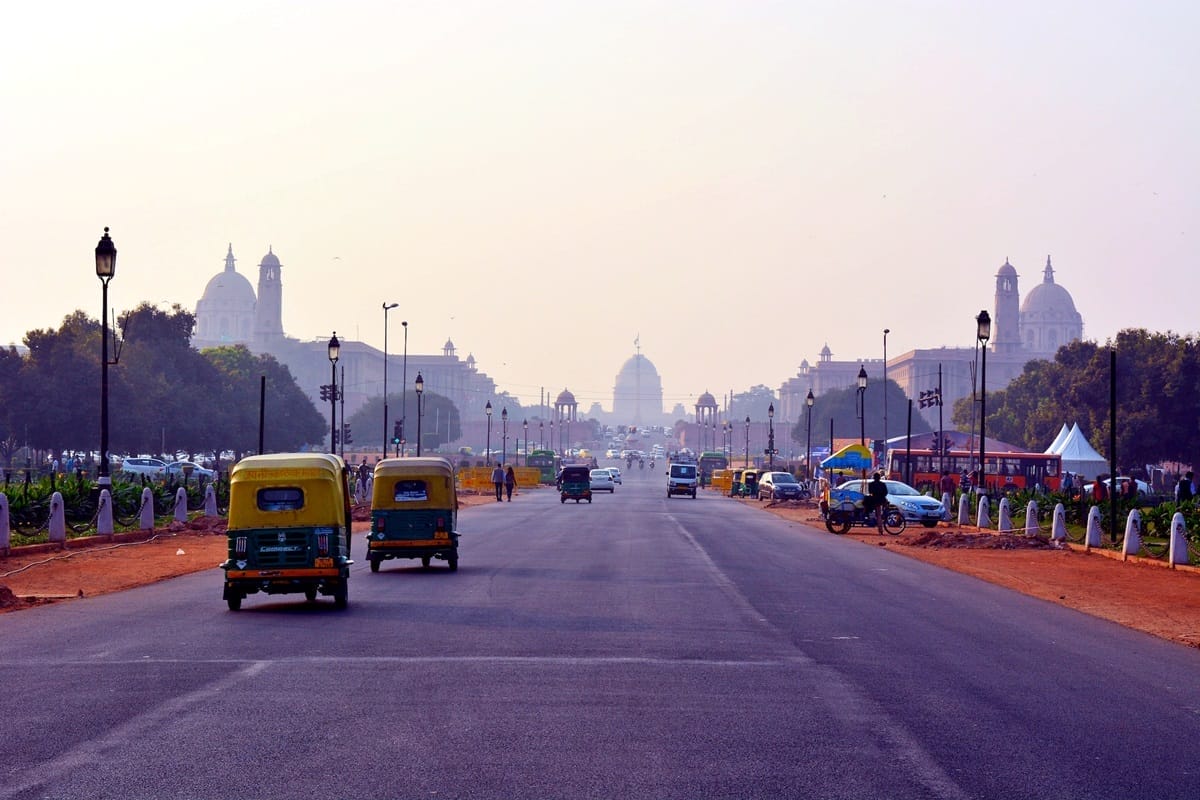The economy of India has become an example when a bulky system with at the same time impressive power begins to move extremely slowly, but after the process of its development is launched, it cannot be ignored.

Recently, the world economy has been going from crisis to crisis. Negative trends have a global impact, but countries cope with these challenges of our time in different ways. According to experts, against this unfavorable background, India has made a kind of transition from the tactics of sluggish action, which does not provide for decisive breakthroughs, to the concept of forced development.
At the beginning of this year, representatives of the mentioned South Asian country demonstrated impressive projects and business ideas at the World Economic Forum in Davos. Investors drew attention to the prospects of cooperation with India. A few months later, a summit of the leaders of the Group of Twenty (G20) was held in New Delhi. Against the background of this event, the stock market of India demonstrated what can be called a dizzying rise.
Also, New Delhi currently has ambitions and certain results in the exploration of outer space. At the end of the summer, India joined the group of countries that placed a spacecraft on the moon. This fact has become a kind of visual demonstration of the scientific and technological potential of the state.
Confidence in India’s development is observed at a time when China, which for decades had a fair status as a driver of global economic growth, entered a phase of decline. Against this background, New Delhi is perceived by many as the successor of Beijing in the context of the mentioned status. At the same time, geopolitical tensions between China and the United States are a state of affairs from which New Delhi can benefit. The situation already has consequences. Currently, many companies are trying to reduce the scale of their production activities in China and diversify manufacturing capacities. This tactic of behavior is due to the fear of restrictions on the part of Washington. United States measures have already restricted Chinese companies’ access to advanced chips. At the same time, Beijing is making retaliatory decisions. China has stopped the export of germanium and gallium used in the production of semiconductors. Beijing has also restricted the supply of graphite needed for making batteries for electric cars.
These realities, conditioned to political factors, can become the basis for the active development of India in the economic sphere and industry. Eswar Prasad, professor of trade policy at Cornell University, says that the economy of this country is ready for greatness. He also noted that the reforms carried out by the Indian government over the past few years have created a platform for sustainable growth.
Eswar Prasad noted that investors perceive India as a profitable business space, for which there are reasonable reasons. For example, the current state of relations between New Delhi and Western countries is positive. Of particular importance in this context is the fact that the United States and European countries are experiencing a kind of crisis in relations with China. So far, this process is at an initial stage, but there is a high probability of the situation developing according to a negative scenario.
It is also important that there are already examples in history of optimistic expectations about the prospects of India’s economic and industrial potential, which have gradually disappeared. At the same time, China was pushing ahead, leaving hopes for New Delhi’s opportunities on the symbolic boulevard of broken dreams. Currently, the gap between the economies of the two Asian countries is huge. In this case, the difference is more than obvious and, in principle, cannot be the subject of any disputes or cause for doubt.
India is the fifth economy in the world and is estimated at almost $3.5 trillion. China’s indicators are much higher. In terms of volume, the economic system of this country is almost $15 trillion larger than the Indian one. China is the second-largest economy in the world.
The International Monetary Fund predicts that New Delhi and Beijing will provide more than half of global growth this year. China’s share in this case will be 35%.
Analysts at Barclays argue that India needs to achieve a steady economic growth rate of 8% to overtake the aforementioned competitor over the next five years. The IMF predicts that the Indian economy will grow by 6.3% this year. This means that the required pace, which analysts have stated, is a realistic goal for New Delhi.
At the same time, China has officially announced that it will strive for an annual economic growth rate of about 5%. Beijing is currently trying to cope with several problems, one of the most significant among which is weak consumer financial activity and the crisis in the real estate sector, which demonstrates a trend of gradual scaling.
Barclays analysts say that the Indian economic system has every opportunity for annual growth of at least 6%. They also stated that achieving the mentioned indicator of 8% will be possible if the local private sector increases the volume of investment.
The government of Indian Prime Minister Narendra Modi is striving to ensure that the country’s economy will be equal to $5 trillion in monetary terms by 2025. Experts believe that the corresponding goal as a guideline of activity implies facilitating business conditions and gaining more companies to invest.
India is launching a process of large-scale transformation of the country’s infrastructure. Billions of state funding have been allocated for these purposes. Within the framework of the relevant process, activities are carried out for the construction of highways, airports, ports, and railways. In this case, New Delhi in a sense copies the strategy of Beijing, which began actively developing infrastructure more than 30 years ago. This year’s Indian budget provides $120 billion in funding for capital expenditures aimed at stimulating economic growth.
The results of New Delhi’s decisions are already there. The national highway network has increased by about 31,000 miles. The total length of this network in the period from 2014 to 2022 has grown by 50%.
The government of the Indian Prime Minister said that the daily pace of construction of national highways has more than doubled compared to the figures recorded nine years ago.
India has also become a sort of hub for some of the world’s largest software developers. Also, many digital platforms have been created in the country, which have transformed the landscape of commerce. Eswar Prasad says that digitalization has changed the rules of the game for citizens and businesses in India. According to him, the process of formalization of the economy has reduced friction in the business environment and has given the residents of the country what he called a sense of involvement in the success of the state.
The Aadhaar program, launched in 2009, has provided nine million Indian citizens with identity documents that they previously did not have. The world’s largest biometric database currently covers most of the country’s population, with a total number of 1.4 billion people. Also, this program has helped the Indian government to save millions as a result of reducing the corruption component in the processes related to the implementation of social initiatives.
The Unified Payments Interface (UPI) platform provides users with the ability to make instant payment transactions by scanning a QR code. This fintech solution has replenished the official economy with millions of dollars.
In September, Narendra Modi, citing World Bank data, said that digital public infrastructure has enabled India to achieve the goal of expanding access to financial services in just six years. According to him, the implementation of the corresponding intention within the framework of more conservative approaches would last 47 years.
Some of the country’s largest conglomerates, including Mukesh Ambani’s Reliance Industries and Gautam Adani’s group of the same name, are investing billions in 5G development and financing projects related to clean energy. In this case, the fact that business empires are based on activities in traditional industries, including fossil fuels, has not become a hindrance to interest in advanced solutions.
India is also demonstrating a kind of tenacity in striving to become a beneficiary of the process of rethinking many global companies of supply chains. The Government of the country has launched a program to stimulate production, for which $26 billion has been allocated. India is seeking to attract companies to create manufacturing facilities in 14 sectors, including electronics, the automotive industry, and medical equipment. Some business representatives have already expressed interest in this proposal. For example, Applied Materials, an American manufacturer of equipment for making microchips, is expanding its presence in India. HP in this country will produce Chromebooks. Also in India, the volume of manufacturing of Apple smartphones is increasing.
At the same time, some experts say that New Delhi’s efforts, already having a certain result, still have not brought the country closer to recreating the economic miracle that China managed to create. Willy Shih, a professor at Harvard Business School, says that India is not doing enough to remove obstacles to foreign direct investment. According to the expert, Beijing solved the corresponding problem more quickly decades ago. Willie Shih also stated that the perception of China was somewhat different. According to the expert, India has more bureaucracy and less predictability regarding non-tariff barriers and everything that is an obstacle to business.
The factor of unpredictability is characteristic of the current leadership of the South Asian country. A striking example of this feature of India was the sudden ban on most of the cash in 2016. The corresponding decision was made by Narendra Modi. This ban has created many long-term problems for businesses and citizens.
In an October report by HSBC, experts Frederic Neumann and Justin Feng said that India is running on an insufficient number of cylinders to fill the kind of vacuum created by the slowdown in the Chinese economy.
Beijing accounts for about 30% of global investment. A similar figure for New Delhi is less than 5%. Frederic Neumann and Justin Feng argue that even with zero economic growth in China and a tripling of investment spending in India, it will take as much as 18 years to bridge this gap. The HSBC report also claims that for another 15 years, the level of consumption in the South Asian country will reach the level that is typical for the People’s Republic of China today. At the same time, experts noted that India will still have a significant impact on the global economy, but if the problems in China worsen significantly, its contribution will not be enough to stabilize the global system.









